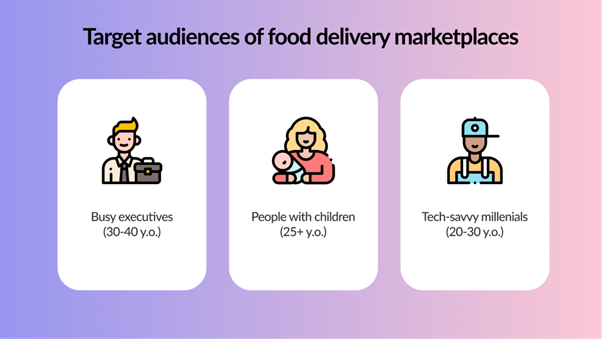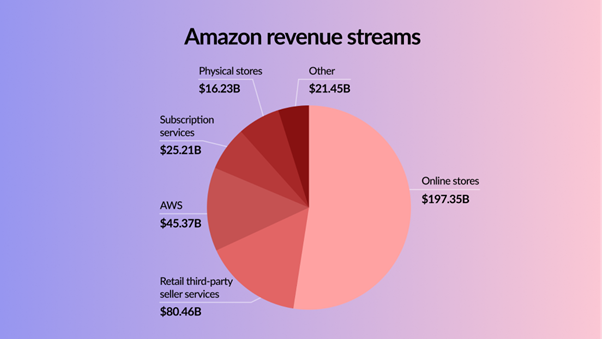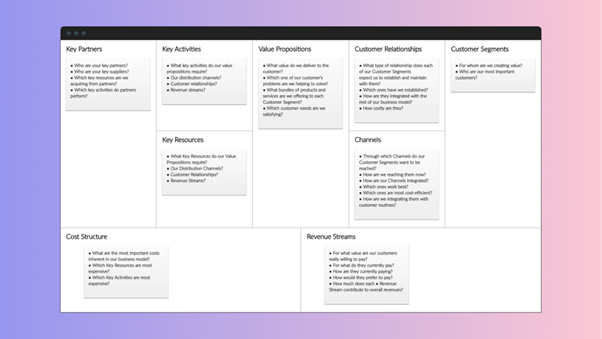Any startup requires the creation of a suitable business model, which will describe the main business processes, products or services, and monetization strategy. So if you have an idea for a startup, your mandatory step is to think about the business model. In this article, we have gathered some tips to help you choose the right strategy for your business.
Selecting an Appropriate Business Model
Finding a suitable and profitable business model can be made more accessible by researching and considering all the options. First, identify your target market and your main competitors. Next, find out what product or service your potential customers would like. Then research different models, analyze each in your situation, and compare them in terms of profitability potential.
Let’s consider all of these steps in more detail.
1. Market research
First of all, when planning to create a startup, think about who and where you plan to offer your product/service and how you can stand out in the market. For example, when the founders of Uber launched it, cab services were expensive and not customer-oriented. So they created a unique offer allowing you to move around the city quickly, conveniently, and, most importantly, at a reasonable price. Thanks to this, their popularity overgrew, and today almost everyone has used Uber services at least once.
2. Determine the target audience
The next step is to determine the categories of users your product will be aimed at. For example, if you want to build food delivery app, then your target audience will be:
- Workers
- People with children
- Millennials, etc.

They all have in common that they need more time to cook, so they will appreciate an app that allows you to order food in a few clicks and get it right to work or home.
3. Research your competitors
Researching your competitors will help you learn their strengths and weaknesses, determine what they do to attract customers, and how you can outperform them. Also, you’ll be able to highlight each one’s unique offerings and develop your own.
4. Determine revenue streams
Any project needs to generate revenue, so consider how you will generate income. You can even combine several monetization models at once for greater efficiency. For example, Amazon profits from transactions on its site, a mix of an e-commerce platform and a marketplace. On top of that, they have a physical store, an Amazon Prime subscription service, etc.

Choosing a suitable business model is essential for achieving desired results. Researching and analyzing each available option can be time-consuming, but it can be beneficial. With careful consideration of all these factors, you can choose a business model that sets you up for success!
How Canvas Business Model Can Help You
Knowing what makes you unique is essential to creating a successful value proposition. Is it an exclusive product or service, unparalleled customer service, or competitive pricing? Identify it and emphasize it in all your marketing materials. To get attention, create a catchy slogan that sums up your value proposition, and distribute it widely – on business cards, web pages, and social media – to remind customers why they should choose you.
To build your business model more effectively, try the Canvas method. It involves identifying the nine key indicators outlined below.

Some Examples of Widespread Business Models
It is essential to consider the different types of business models when running a business. There are various options to choose from, each with its advantages and disadvantages. Some of the most common types of business models include:
1. Franchise
Franchising allows entrepreneurs to leverage an existing brand and its products or services. This type of model is great for businesses that want to expand quickly into new markets.
2. E-commerce
This model involves selling products or services online and over the internet. It’s an excellent option for businesses that don’t necessarily have a physical store presence but still want to reach customers worldwide.
3. Network Marketing
Also known as multi-level marketing (MLM), this business model relies on salespeople recruiting other salespeople, who then recruit even more people, forming a pyramid-like structure.
4. Disruptive Business Model
A disruptive business model shakes up an industry by introducing innovative products or services at lower prices than those already available. Uber and Airbnb are two companies that successfully disrupted their respective industries using this approach.
5. Fee-for-service model
The fee-for-service business model allows entrepreneurs to make money from their expertise. This model will enable individuals in various occupations, such as hairstylists, accountants, and real estate agents, to receive a specified fee for their services. You may consider taking on additional clients or increasing rates to increase earnings potential. Creating a fee schedule with set prices for the services is crucial. Additionally, self-promotion and the availability of services in appropriate places can aid in attracting potential clients. Adopting this business model can be successful with adequate planning and effort.
6. Subscription model
The subscription business model is an effective way to generate a steady, ongoing income. It allows you to grant customers prolonged access to products or services in exchange for regular payments. This model covers digital products such as software, music, videos, online courses, and physical items like monthly food or beauty box shipments. You can also, for example, use a subscription model to provide personalized workout plans, which will allow you to quickly recoup the cost to develop a fitness app and make a profit. With a subscription-focused business, you don’t have to worry about collecting one-time payments since customers are charged regularly. To thrive with this model, you must build a compelling offering and advertise it properly so people find and subscribe to your service. If done correctly, the subscription business model can prove very profitable and bring a reliable income source into your business and grow.
7. Bundling model
The bundling business model is an effective strategy to raise sales and market products that may be harder to promote separately. This model enables businesses to bundle two or more products for their customers, potentially at a lower price than individual sales. Companies with multiple related products or services, such as fitness classes, software subscriptions, or beauty boxes, can benefit from this. Bundling multiple items together can offer customers discounts, encouraging them to make larger purchases and potentially attracting new customers. Profit margins can be narrow as product prices are often lowered to attract buyers. Bundling is an effective strategy for increasing profits while providing attractive offers to customers.
Bottom Line
Proper business model is a key factor affecting your startup’s success. There is a wide variety of different models, each has its pros and cons and suits certain types of business. Conduct a research and decide on the right strategy, or turn to an experienced technical partner to help you.








